|
Today, the guppy is bred around the world to create different varieties. - Photo courtesy Dr Ryan S Mohammed Did you know that the guppy (Poecilia reticulata) was named after a Trinidadian?
You may be wondering, how did this happen? Well, in 1866, Trinidadian Robert John Lechmere Guppy sent specimens of the fish from TT to the Natural History Museum in London. In honour of Guppy’s contribution, which helped popularise the fish and expand research on it, British zoologist Albert Gunther named the fish after him. But the guppy’s name isn’t its only link to TT. Today, the fish has been bred all over the world to create different varieties and has become wildly popular in the ornamental trade. However, the original wild fish bred to create these varieties came from TT. Dr Ryan S Mohammed told Newsday Kids, “The wildtype of all fish in the ornamental trade that are referred to as guppies would have originally come from Trinidad. “The guppy has been selectively bred in places like the Netherlands, Singapore, Thailand, China, Europe and in the US for different colour patterns. “That’s why you have so many different varieties of the guppy with big tails, small tails, split tails, leopard colours, albinos, red tails, black tails…you name the colours of the rainbow, you’ll find it on a guppy.” Mohammed is an aquatic ecologist and has researched a wide variety of species found in ecosystems like mud volcanoes, wetlands, rivers, estuaries, and reefs. He particularly loves doing research on aquaculture (the farming of fish) and alien invasive species. Mohammed said that given different-coloured guppies have emerged, since they have been bred, they have been nicknamed the “rainbow fish.” But even within the species, there are interesting colour variations among individual fish. “The males are usually smaller than the females, but the males are more colourful than the females. Just like their physical characteristics, the uses of guppies also vary. Though they are a popular pet species, that’s not their only use. Varieties of the guppy have been introduced in places like Hawaii and Barbados to act as a natural pest control and feed on mosquitoes. These fish are also used in scientific research. “Guppies are used in a lot of different scientific research to investigate evolution. “You’ll find that different populations of guppies, found in the wild of the same country, will have different colour patterns. “These colour patterns are indicative of different adaptations to surviving different things like predator pressures and water quality. “For example, guppies can be found in areas that have very low dissolved oxygen and very poor-quality water, but they still survive.” Because of their adaptability, Mohammed said the guppy is one of the few species of fish that can be found in the Pitch Lake. “The Pitch Lake only has three species of fish and guppies are the most abundant of the three species. “This is because they are able to adapt to deal with elevated water temperatures as well as the hydrocarbon there is in the lake.”
0 Comments
Written by the late Angelo Bissessarsingh in 2010 is dedicated to the First Peoples of Trinidad and Tobago.
TRINIDAD’S FIRST PEOPLES. Sketchy school textbooks have taught generations of Caribbean children numerous myths about the region’s First Peoples such as the conflicts between the savage Caribs and peaceful Arawaks when in reality, there were many different cultures and languages. Around eight thousand years ago, a small band of Neolithic peoples crossed a narrow land bridge from the continental mainland of South America into Trinidad. They carried little, save perhaps a few treasured ceremonial artifacts made of green-stone that had been quarried from the misty heights of the Roraima Mountains. In the south-western part of Trinidad they founded two settlements on the fringe of a mangrove swamp which provided all the necessities of life. These peoples were hunter-gatherers and lived off the bounty of nature- from the roots of the mangrove they plucked oysters whose discarded shells formed a great refuse heap that over a millennia of unchanged habitation grew to be a hill almost twenty feet high. The fruits of the wild and the starchy bulbs of water plants were their vegetables, pounded and processed with simple stone tools. Small land mammals were hunted for meat with bone-tipped spears. Bone was also used to make bi-pointed fishhooks. Crude stone axes felled small trees which were used to make round huts. Cut off from the mainland by rising sea levels. This wave of hunter-gatherers eventually developed the technology to manufacture dugout canoes and may have reached Tobago. Their remains have recently been discovered in Barbados as well, but their presence in Trinidad makes this island the oldest inhabited place in the Caribbean. In the 1960s and 70s the shell mound , located in what was by then known as Banwari Trace in the sleepy village of San Francique, was excavated by the late Peter O’Brien Harris and yielded the remains of Trinidad’s oldest ‘resident’. Banwari Man (or woman) is a human skeleton approximately five thousand years old that was found buried in a foetal position. A tenuous cultural and anthropological connection has been established between Banwari Man ((or woman) and the present-day Warao First Peoples of the Orinoco Delta in Venezuela. It is now housed at the University of the West Indies Zoology Museum at St. Augustine. In the wake of the archaic hunter-gatherers came waves of pottery-making cultures beginning in 250 B.C These were peoples from the Orinoco Delta and their ceramics were durable and highly decorated. The adornments were fanciful heads and shapes in clay which anthropologists have identified as an intense theological phenomenon rooted in religious practices that deified zoomorphic (animal) and anthropomorphic (human) spirits. The earliest pottery cultures are known as Saladoid because the ceramic style was first classified at Saladero in Venezuela. Later movements of first peoples came to Trinidad and brought with them new agriculture, lithics (stone-tool tech), and ceramics. Their refuse heaps or kitchen middens can be found throughout the island and several are very extensive indeed. One such discovery was recently made under the foundations of the Red House in Port-of-Spain which was erected in 1848 and until its recent renovation began, housed the Parliament of Trinidad and Tobago. The find included potsherds and human remains. Although Columbus stumbled upon the island in 1498, the waning of the Amerindian presence in Trinidad came in the wake of the first permanent Spaniard settlement at San Jose de Oruna (St. Joseph) in 1592. Those natives not killed off by disease or overwork were herded into small villages called Encomiendas which were little more than serfdom under the control of a Spanish grandee. The alternative from 1687 was residence in one of the several missions established by Capuchin monks which were only mildly preferable to the Encomiendas. An uprising at the mission of San Francisco de los Arenales (near present-day San Rafael village) saw the Amerindians slaying three priests before being pursued and brutally punished. The missions were really the end of Amerindian culture since they adapted into the Spaniard mode of existence. The missions lasted after the British conquest of 1797 and were dissolved in 1840. The mission villages became desolate and the people in them resigned to their fate. In 1825 a rare diary entry gave a glimpse of what they had become: “They seem to be the identical race of people whose forefather Columbus discovered, and the Spaniards worked to death in Hispaniola. They are short in stature, (none that I saw exceeding five feet and six inches,) yellow in complexion, their eyes dark, their hair long, lank, and glossy as a raven’s wing ; they have a remarkable space between the nostrils and the upper lip, and a breadth and massiveness between the shoulders that would do credit to the Farnese Hercules. Their hands and feet, however, are small-boned and delicately shaped. Nothing seems to affect them like other men ; neither joy nor sorrow, anger nor curiosity, take any hold of them. Both mind and body are drenched in the deepest apathy; the children lie quietly on their mothers’ bosoms; silence is in their dwellings.” Arima was the largest and still retains vestiges of its past as well as a vibrant First Peoples group, the Santa Rosa Carib Community which dedicates itself to the preservation of native culture and championing indigenous affairs. Annaparima (San Fernando Hill) is a sacred site and is now visited annually by First Peoples including the Warao of the Orinoco Delta who perform religious ceremonies there. A slow but sure interest in the truths of our first settlers is now firmly rooted and hopefully will continue to grow. When the Macqueripe beach in Chaguaramas was closed to the public in March because somebody allowed a big hole to form in the seawall and the staircase railings began falling off, everybody got stopped from bathing there, while they fixed it.
Then no less than a minister of Government reopened the beach months later, only for the health authorities to realise that the Covid-19 virus loves it when plenty people squeeze into a space the size of a football field. So we all got blanked again, with the ban this time extending to bikers, hikers, joggers and those yoga people in the Bamboo Cathedral. Trinis, you might take comfort in knowing that all of this happened before, when Macqueripe was a place you were not allowed. That is, unless you were working for, or had business with, the United States military. In fact, the beach and much of the Chaguaramas peninsula became virtual United States territory during World War II (September 1, 1939-September 2, 1945) when 135,000 American troops were assigned to Latin America and the Caribbean, with the majority of that force coming to Trinidad. The Americans got a 99-year lease to the Chaguaramas area in a deal known as the “Destroyer for Bases” agreement, with the British getting in exchange 50 ageing battleships as they fought the German advance in Europe. The area was acquired under two separate agreements, the first of which, in April 1941, involved 7,940 acres of Crown land, including the five islands in the Gulf of Paria. Land acquisition deal The initial plan was for a naval air station with facilities to support the operation of a patrol squadron of seaplanes and the development of a protected fleet anchorage in the Gulf of Paria as a means of projecting American might, and to protect the vital Panama Canal from a sea attack coming from the south through the Caribbean. Then the Japanese bombed Pearl Harbour, the US declared war on the Axis powers, and Trinidad became of greater strategic importance, accelerating the construction of the Wallerfield and Carlsen Field airbases. And with German submarines prowling the Atlantic and sinking merchant ships in the Caribbean Sea and in T&T’s territorial waters, an airship (blimp) base was developed and coastal defence artillery and bunkers set up around the island. Some of this impressive infrastructure you can still find remnants of in Los Iros, Cedros, St Margaret’s, and Moruga. There are also installations you can still find in Cap-de-Ville where a concrete-fortified administration building became, of all things, the home of the Beast of Biche, Mano Benjamin, after he served his time for his atrocities. To ensure military security of the entire area, a second land acquisition deal was brokered in December 1942, involving 3,800 privately owned acres, with four bays —Carenage, Chaguaramas, Teteron, and Scotland, and two valleys— Chaguaramas and Tucker—becoming areas of separate naval activity. The Seabees The US had been using civilian contractors on the projects pre-war, but when it officially entered World War II, this had to stop. The use of civilians was not permitted since a non-combatant resisting the enemy would be deemed a guerrilla and summarily executed. And this is how the Naval Construction Battalion came to be, units of men capable of fighting and building, and given the phonetic name Seabees. These were men, aged 18 to those in their 60s, who volunteered, and later selected, to help the homeland win the war by building what the military needed. And they came with more than 60 skills—craftsmen, electricians, carpenters, plumbers, equipment operators—capable of building anything alongside the Civil Engineering Corps. More than 325,000 would serve in World War II, in more than 400 locations. Several of these battalions, each comprising about a thousand men, would sail to Trinidad during wartime—the 11th, 30th, 80th, 83rd, and 559th Construction Battalions, and be deployed on every coast of the island (they particularly loved Manzanilla). All of this is mentioned because much of what you see around Macqueripe (the bay was also a US submarine station) was built by the Seabees, with the help of local labour, from the road network and 150-room Tucker Valley naval hospital to the officers’ quarters and beachfront recreational facilities. Macqueripe in the 1940s. Source: U.S. Navy Seabee Museum And because we had to forfeit this area of the peninsula and beach access at Macqueripe when the Americans entered the war, it was agreed that the United States would build and turn over to the colonial government a road to Maracas Bay as compensation. Before then, the only way to get to Trinidad’s iconic beach was by boat or mountain trail. Amazing feat The historians record that work on this seven-and-a-half-mile road was started late in March 1943 by the contractor, continued by the Seabees upon termination of the contract in June and completed and turned over to the local government in April 1944. The records of the 30th Construction Battalion gave an account of the feat thusly: “The road to Scotland Bay was our toughest project. The men had to cut through solid rock most the way and dust and heat did not ease the work. But the road went through and later a complete recreation centre was built at the bay. Our men on the Maracas Road detail did a job there that would have amazed even the most agile of mountain goats, as they manoeuvred around the high rock cliffs and constant landslides.” The road to Maracas, which began at Saddle Road, required the removal of 1,000,000 cubic yards (764,555 cubic metres) of rock and dirt from perilous mountainside heights using dynamite, excavators and bulldozers through virgin jungle. It was described as “24 feet wide, paved with asphalt macadam for a width of 14 feet, and nowhere exceeded a 10 per cent grade, despite its climb from sea level at Port of Spain to a 1,335-foot elevation within a distance of two miles”. The US Navy Construction Battalion bulldozed and blasted a road through the Northern Range to get to Maracas Bay during construction in 1940s. Source: U.S. Navy Seabee Museum There is no record of anyone dying on the project, which we got for free. And it took all of 11 months. Source: richard.charan@trinidadexpress.com Daily Express, June 17, 2021 Wrightson Road, in Port-of-Spain, is named after English engineer Walsh Wrightson, a racist who held that non-whites ought not to vote or govern the country.
Wrightson, Director of Public Works and member of the Legislative and Executive Councils from 1895 to 1907, was responsible for the construction of what became known as Wrightson Road, a 1.6 km roadway cutting along the shoreline on the western edge of downtown Port-of-Spain to the lighthouse. In 1900, he built the road from the Charles Street junction to gain access to town’s sewerage pumping station sited at Mucurapo Point on the Maraval River. It followed a path along the seashore on the Woodbrook Estate. The roadway, extended in the 1930s by India-born engineer Ranjit Kumar, was named for Wrightson. Wrightson was also responsible for several landmark projects on the island. He supervised the construction of a sewer system for Port-of-Spain in 1897. He designed Knolleys Tunnel which was built in 1898 to enable the railway line from Jernigham junction, Cunupia to Tabaquite to go through a hill in the central range. He built the Moruga Suspension Bridge in 1899. And he designed, through architect Daniel Hahn, the best building in the city at the time, Queen’s Royal College, which was built in 1904. Wrightson, however, was a central figure in the Water Riot of 1903, having drafted a waterworks bill that sought to install water meters in homes and increase water rates. The bill was hotly opposed, and it sparked off unrest. The episode had political implications because the agitation against the waterworks bill was said to arise from bitterness caused by the abolition, in 1899, of the borough council of Port-of-Spain. The eruption, precipitated by a volatile combination of disenfranchised masses and an oppressive colonial government, led to the Red House being set on fire by angry burgesses. More than a dozen people were killed by police. Over the years, there have been calls for the renaming of Wrightson Road to Ranjit Kumar Highway. Dr. Brinsley Samaroo, professor emeritus of history at the St. Augustine campus of The University of the West Indies (The UWI), supported the call. In an article published in the Daily Express on 12 June 2020, Samaroo described Wrightson as “one of the worst imperialists. Absolutely racist”. Samaroo said, “He (Wrightson) sparked the Water Riots in 1903 since he took the decision to meter water, and he imposed water rates on poor people. “He was adamant non-white people didn’t have the right to govern themselves. He strongly believed Crown Colony government must be perpetuated. It’s in the Hansard. If you are not white, you don’t have the gift to govern yourself. “He was totally against the movement for the franchise (right to vote). Wrightson Road should be renamed after the director of works, engineer Ranjit Kumar. Kumar designed it and built it in the 1930s.” Source: Dominic Kalipersad, June 12, 2021 TRIBUTE TO PROMINENT LABOUR LEADER
ALBERT MARIA GOMES In Trinidad and Tobago many people tend to associate Labour Day Celebrations with one man “ TUBAL URIAH BUTLER” , but he was only one of the Labour Leaders in our country. Today the ABVMOTT recognizes the contribution of Albert Maria Gomes for his contribution towards the trade union movement. Gomes played a significant part in the establishment of the development of Unionism in T& T . It's a sad day when we only pay tribute to a few of our labour leaders forgetting that there were other individuals also made significant contributions to our country's development. Who was ALBERT MARIA GOMES (1911-1978) and what were his contributions towards the labour movement in T & T? Albert Maria Gomes of Portuguese descent was born in Belmont, Port of Spain, Trinidad. Ever since 1930s he was an active trade union leader. In fact he wore many hats .He was a unionist, politician, and was the first Chief Minister of Trinidad and Tobago. He was the founder of the Political Progress Groups and later led the Party of Political Progress Groups. He was active in the formation of the Democratic Labour Party(DLP) in Trinidad and Tobago In the 1930s, Gomes demanded workers’ rights, more pay, and criticised the colonial power structure with revolutionary arguments. During the 1940s, Gomes was elected the President of the Federated Workers Trade Union (FWTU) working together with Quintin O'Connor as the Secretary he and his team were successful in building up the FWTU a movement which played a critical role in the establishment of unionism in Trinidad and Tobago. In 1938 Albert Gomes was elected into the Port-of-Spain City Council in 1938, in which he served for nine years. In 1945, he was furrher elected as a member of the Legislative Council, and made a member of the Executive Council in 1946. From 1950 to 1956, Gomes was re-elected to the Legislative Council and served as the pre-Independence Minister of Labour, Industry and Commerce. He was leader of the conservative Party of Political Progress Groups (POPPG). From 1958, he served as a member of the West Indies Federal House of Representatives, which dissolved with the break-down of the Federation in 1962. When the POPPG was defeated by the only nine-month old People’s National Movement (PNM) in the 1956 election by winning 13 out of the 24 seats (that is, 1,458 votes more than the POPPG), Gomes took the defeat very hard and left Trinidad to live in England. WE SALUTE YOU ALBERT MARIA GOMES, PATRIOT AND SON OF THE SOIL FOR YOUR CONTRIBUTIONS TOWARDS THE ESTABLISHMENT OF UNIONISM IN T & T. Credit to sources “THE PORTUGUESE OF TRINIDAD & TOBAGO and WHO, WHAT, WHY , Trinidad 1950 and the Virtual Museum of Trinidad and Tobago. The economy of Trinidad and Tobago, just like the people of this great nation, is a dynamic manifestation of the historical contributions made by every person or entity who has ever been part of our national tapestry. It is the manifestation of various inputs, policies and activities, enacted on a local scale, to create the success that we know and enjoy today. ( Bissessarsingh 2010).
All too often, it is easy and convenient to look at the “here and now”, ignoring the “there and then” that laid the basis for our current development as a nation. In this series the Trinidad We Once Knew we presents a historical look at Trinidad and Tobago through images from times gone by as well as stories of prominent men , women and companies that have all contributed in shaping our nation. In this article shine the spotlight on a BAKING COMPANY from the 1920s TRINIDAD BAKERIES LTD 1920 Remember the days when “Holsum” Bread, Cakes and Pastries were a household name. The baking factory associated with Holsum baking products was the Trinidad Bakeries Ltd founded in 1920. In 1930 the Trinidad Bakeries Company erected a state of the art’ baking facility at #23 Park Street, Port of Spain and was listed as one of the leading baking establishments in the West Indies. The Trinidad Bakeries Ltd. used only the finest Canadian flour in the manufacturing of their products. Their brown and white bread products in the early days were wrapped in wax paper and a fleet of vans owned by the Company provided a dependable supply of fresh bread and cakes to the company’s clientele across Trinidad . In addition their products which included cakes , pastries and a variety of bread were sold to the public at their headquarters on #23 Park Street , Port of Spain and their sales department located on #31 Frederick Street , Port of Spain. Today the Kiss Baking Company Ltd. founded in 1978 is the leading Trinidadian baking company that manufactures and markets packaged bakery goods. Below is an advertisement by the Trinidad Bakeries Ltd posted in the book, “Who, What , Why , Trinidad 1950”. From the late Author/Historian Angelo Bissessarsingh.
Although they brought the habit of ganja-use from their homeland, the Indian Indentured Labourers who began arriving in Trinidad in 1845 were introduced to rum in the colony. As early as 1860 it was recorded that drunkenness was a problem since many Indians were jailed for abandoning work due to inebriation. When the Canadian Mission to the Indians was founded by Presbyterian minister, Rev. John Morton in 1868, he noted : “I have never been in a place where rum stares one so constantly in the face as Trinidad. Two large distilleries are above smuggling but there is not a village of any size in this island, except the Mission (Princes Town) which has not got a distillery where smuggling is more or less carried on. San Fernando has 42 licensed places, Iere Village 4, the Mission 10 etc. ” The smuggling that Morton talked of was the manufacture of illegal spirits, called Babash. The drinking among the Indians inadvertently contributed to the high rate of wife-murders which occurred throughout the 19th and well into the mid 20th centuries. With a drink of rum selling for as little as six cents, a labourer could be drunk all day for a couple dollars which could very well represent his week’s earnings. Drinking was seen as a means of dulling the harsh realities of labour on the sugar estates of Trinidad. In 1887, J.H Collens noted: “In Trinidad, as in India, many of these people become renegades to their creed, solely for the sake of being able to drink and sell rum, and it must be borne in mind that, with the Coolie, who will not partake of proper nourishing food when he has to pay for it himself, to drink rum is to become a drunken, besotted beast…………I have stated that by the Koran the Mussulman is prohibited from indulging in strong drink. It is unlikely that many in Trinidad forsake the religion of their forefathers from no better motive than to gratify their craving for alcohol. Years ago, when a youngster, I remember seeing a pictorial sketch in Punch entitled ' Accommodating.' An officer is seated in his bungalow, enjoying the dolce far niente of military life in India. Addressing his native bodyservant who stands near :—' What caste are you, Bamsammee V Native : ' Same church like Sahib ; me eat beef and drink brandy, sar !' To him Christianity and grog-drinking were unfortunately synonymous terms. After all, coolies are much like other people : treat them properly and they -will serve you well—always, however, with an eye to the main chance ; but is not human nature the same all the world over” In the 1890s the dangerous precedent of rum for wages began. At Forres Park, the lifestyle of the labourer was typical…Squalid barracks, zero sanitation, no school for children , scanty rations, and heavy tasks. One great evil which was introduced by Mr. Farmer, the manager in the 1890s was the offering of white rum, firewater, as a supplement to wages and even as wages themselves. This of course enslaved the Indians since they became rapidly dependent on the alcohol and thus were always in debt to the estate since the cost of rations was also deducted from the pittance they received for their task work. Almost until the demise of the sugar industry in 2007, employees of Caroni 1975 Ltd. could acquire rum on credit from the distillery and have the cost deducted from their wage packets. In the 1950s, researcher Morton Klass recorded the lifeways of Indo Trinis in Felicity. In a typical sorrowfully poor shopping list for the fortnight, the average family stinted the basics,…one tin of sardines for five persons , a few pounds of flour and a bottle of oil; but never missed the half-bottle of puncheon rum. One of the banes of Indo Trinidadians, most people are angry when this is mentioned, but it is a sad reality with historic origins. Disclaimer : Views expressed are that of the author . Not intended to offend anyone sector of population. Jonathan Ellis
Did you know Cornrows were used to help slaves escape slavery? Slaves used cornrows to transfer information and create maps to the north. Since slaves were not allowed to read or write they had to pass information through cornrows. It is believed to have originated in Colombia, South America where Benkos Bioho, in the late 1500’s came up with the idea to have women create maps & deliver messages through their cornrows. They were also called “canerows” to represent the sugarcane fields that slaves worked in. One style had curved braids, tightly braided on their heads. The curved braids would represent the roads they would use to escape. Also in their braids they kept gold and hid seeds which helped them survive after they escaped. They would use the seeds to plant crops once they were liberated. Cornrows was the best way to not give any suspicion to the owner. He would never figure out such a hairstyle would mean they would escape or the route they would take. #BLACKHISTORY Source: Virtual Museum of Trinidad & Tobago, May 19, 2021 |
T&T news blogThe intent of this blog is to bring some news from home and other fun items. If you enjoy what you read, please leave us a comment.. Archives
November 2024
Categories
All
|
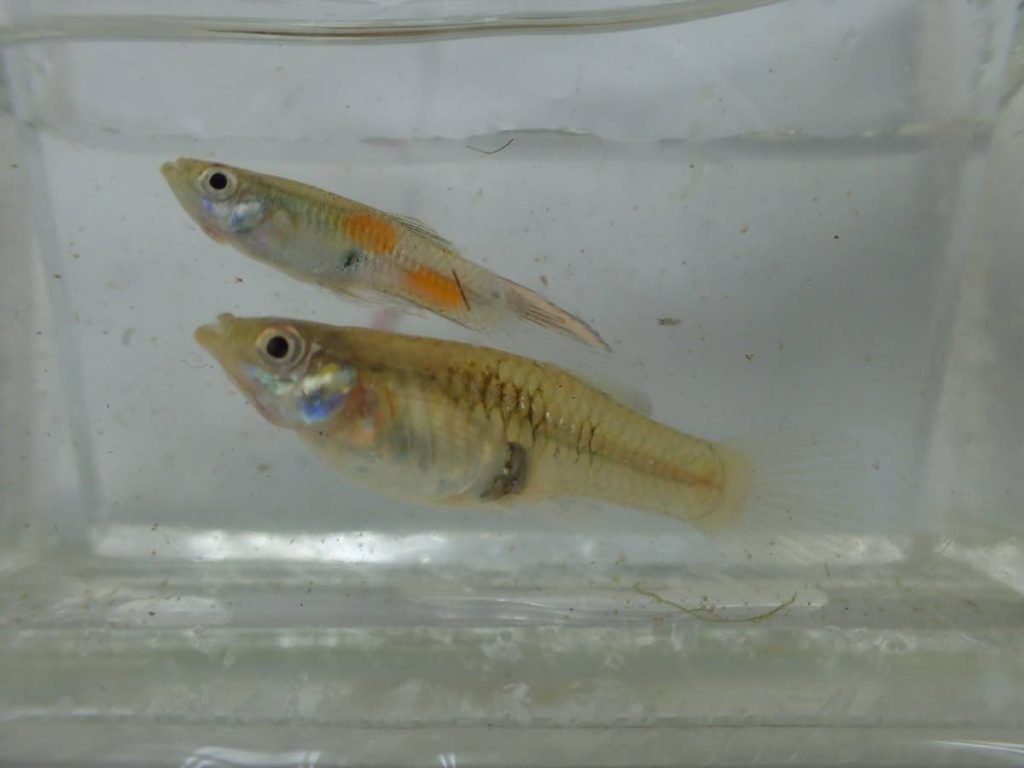
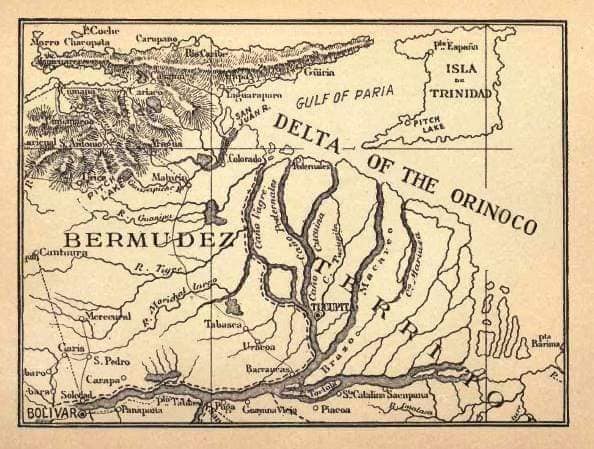

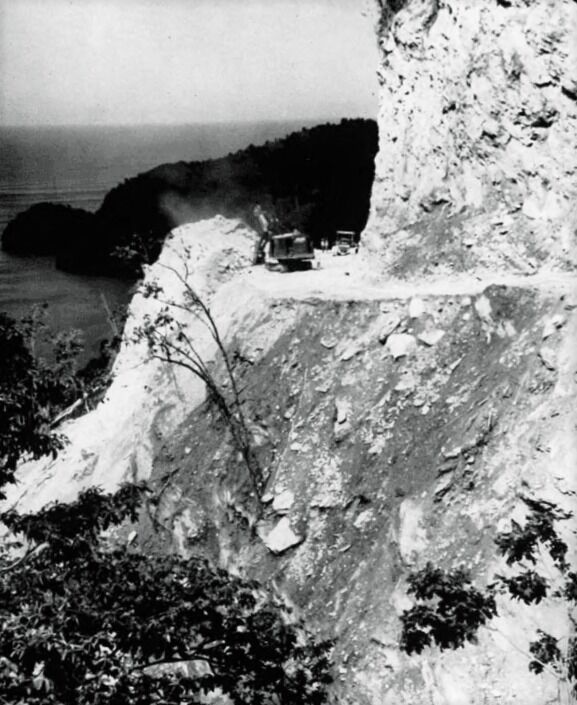







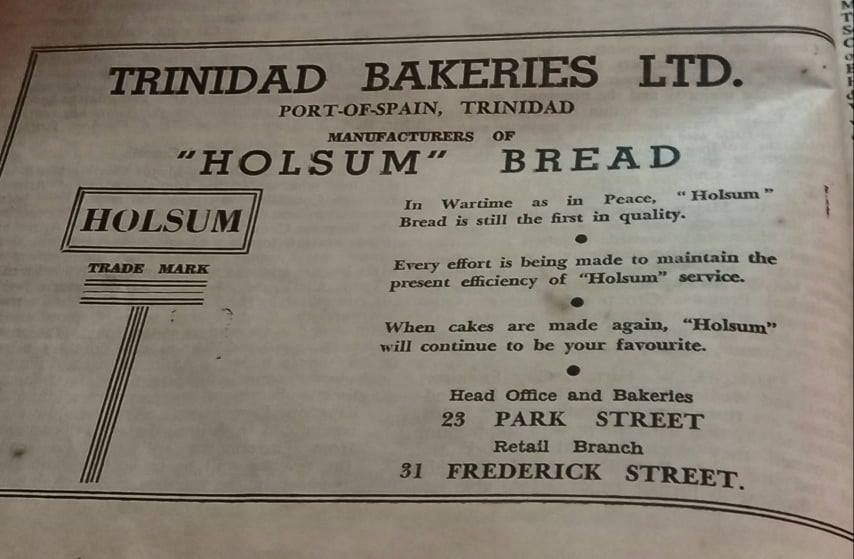
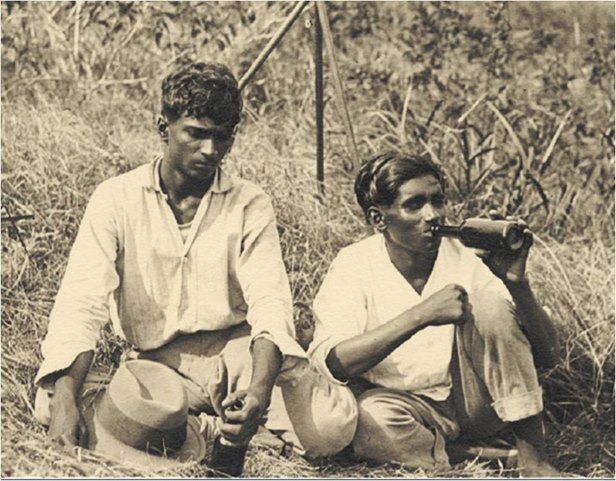




 RSS Feed
RSS Feed